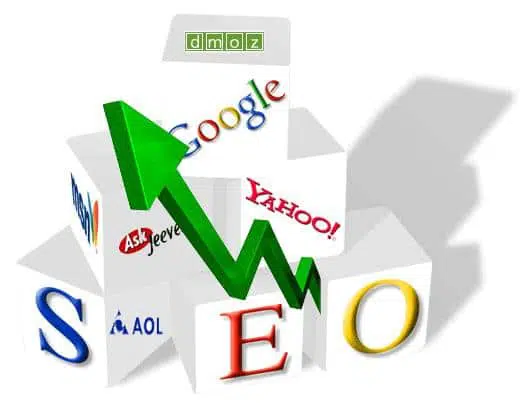Search Engine Optimization (SEO) is the practice of organizing your website’s content and code to improve each page’s organic rank. Organic rank refers to results that appear on a search engine that are not paid for. This is important for websites, in general, but commercial websites stand to gain more from the use of SEO since it is important for the business to appear first in rankings. Below are some of the basics for SEO practices which include target keywords and onsite and offsite efforts.
Image via Wikipedia
Target Keyword
One of the most important decisions to make when first starting SEO for a website is the target keywords. Target keywords refer to the words or phrases that best describe what it is that you can find on your website. In the past, SEO practices simply called for cramming as many keywords on a page as possible, but this has changed. Google is now much more complex than it used to be; it actually tries to understand when you ask a question. When it crawls websites it gets an understanding of what it is the page is really saying.
So when deciding on keywords it is better to think of them as “phrases” rather than just words. Say you were doing SEO for a company that sold plates that had decorative designs on them. You would want to use words like “handmade dinnerware” or “artistically painted plates”. You would not want to use the word “plate” fifty times in a single paragraph. Doing so would be a red flag for Google.
Onsite and Offsite SEO
SEO mainly falls into two different categories: Onsite SEO and offsite SEO. Onsite SEO consists of any SEO practices that happen on the website, and offsite SEO is all practices that happen off of the website. Two of the main onsite practices are the use of proper title tags and meta descriptions. Two examples of good offsite optimization are the use of listings and backlinks.
Onsite SEO: Title Tag
Title tags appear on result pages for search engines. The title is meant to be an accurate example of the content on the page. It is used by search engines to identify the keywords of a page and users to get an idea of what information is on the page. The page title should not be more than 160 characters long, because most search engines will cut it off after that point, so having a title that is too long would look unprofessional if it were to be cut short. The title tag also works as an indicator for google so it knows what to look at when it crawls your website.
Onsite SEO: Meta Description
A meta description is snippet of a page’s content meant to give the user an idea of what is on that page. A good meta description consists of a few descriptive sentences that act as an introduction to the rest of the page. It is not a good idea to put too much into the meta description because then users will not bother to visit your website. Instead they will just read the meta description and be done with it, and if that happens you will lose a potential visit to your website.
Offsite SEO: Listings
Listings are any website that lists your business. Most listings are third party directories. These can include things like Hot Frog, Yellow Pages, and City Search. Directories such as these allow you to search an area for a service. It will then show you companies in the desired area offering the desired service.
There are many third party listing sites out there and thankfully you do not need to be on all of them. Most listing sites will actually pull information from other listing sites that are considered more reliable. So all you have to do is get a few reliable listing sites to start and the rest will slowly pull information from them. One of the ways to check what listing sites you are on and if the information is accurate is by using a website called Moz. It is very reliable and can be a big help to anyone just getting started in SEO.
Offsite SEO: Backlinks
Obtaining backlinks is one of the most important and most difficult endeavors you can undertake for SEO. A backlink is a link that comes from another website and links back to your website. The reason backlinks are so important is because search engines see them as a vote of confidence. Backlinks are basically a way for other sites to say that they support that your website has credible information. The more backlinks you have, the more authority you have on search engines. What you do not want to do is pay for backlinks. There are websites where you can pay for a backlink, but most search engines are aware of these sites and you will actually lose authority if you use them.
Moving Forward
The above are just some of the practices for SEO, not all of them. Following these practices is a starting point. One of the best things you can do is to research SEO and build up an understanding of it. It will take quite a while to get a full grasp of the topic, but it will be worth it in the end. If you are interested in reading more about SEO or other web marketing techniques, check out some of our other digital marketing blog posts.

